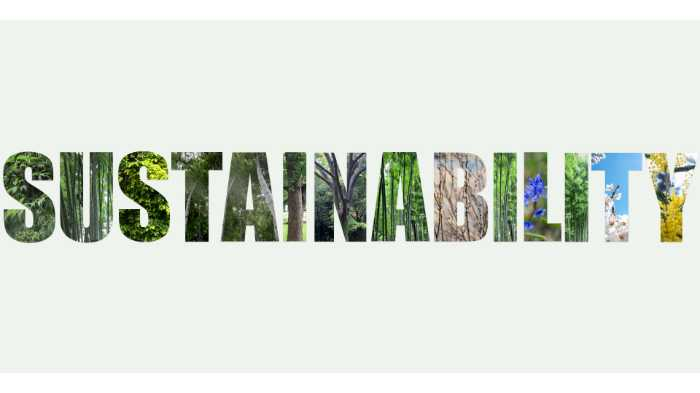
We all know that we need to do something about climate change, or it will do something to us. But the problem is, that it is not so obvious where to begin. There are so many proposed solutions, and it can be hard to know where to start. That’s why frameworks for sustainability are so important. They provide a blueprint for how we can create a sustainable future. In this blog post, we will discuss some of the most popular frameworks for sustainability and explain how they can help us achieve our goals.
What are Sustainability Frameworks?

Sustainability frameworks are guidelines that businesses can use to help them achieve sustainable development goals. All of these frameworks have different goals and objectives, but they all share a common goal of promoting sustainable development.
Sustainability frameworks provide businesses with a roadmap for how to operate in a way that is environmentally friendly, socially responsible, and economically viable. By following these guidelines, businesses can help ensure a sustainable future for our planet.
What is the CDP?
The CDP (formerly the Carbon Disclosure Project) is an international non-profit that works with businesses and governments to accelerate the transition to a low-carbon economy. The CDP collects data on greenhouse gas emissions, water use, and deforestation and uses this data to evaluate the environmental impact of companies and cities.
The CDP also provides guidance on how businesses can reduce their environmental impact and become more sustainable. In recent years, the CDP has been increasingly recognized as a leader in sustainability reporting, and its data is used by investors, multinational corporations, and city governments around the world.
What is the GRI (Global Reporting Initiative)?
The GRI, or Global Reporting Initiative, is a non-profit organization that helps businesses take action towards sustainability. The GRI provides guidelines and indicators for businesses to use when measuring and reporting their progress on sustainability issues.
The guidelines are voluntary, but they are widely used by companies around the world. Many businesses use the GRI guidelines to set goals and track their progress on sustainability initiatives. The Global Reporting Initiative GRI also publishes annual reports on the state of corporate sustainability.
These reports provide valuable insights into how businesses are performing on sustainability issues, and they can help companies benchmark their progress against their peers. Overall, the Global Reporting Initiative GRI is a valuable resource for businesses that want to take action on sustainability.
What is the Global Real Estate Sustainability Benchmark?
The Global Real Estate Sustainability Benchmark (GRESB) is a way for businesses to measure their sustainability performance. The Benchmark assesses performance across a range of indicators, including energy use, water use, waste management, and greenhouse gas emissions.
GRESB provides insight into how businesses are performing on sustainability and how they can improve. The Benchmark also helps businesses to compare their performance against others in the industry.
This allows businesses to see where they are leading the way on sustainability and where there is room for improvement. GRESB is an important tool for businesses that are committed to achieving sustainability objectives.
You can’t improve what you don’t measure.
Free Verified Carbon Calculators.
Erase Your Carbon Footprint in less than 5 Minutes
Personal Carbon Footprint Calculator
Business Carbon Footprint Calculator
What is the Task Force for Climate-Related Disclosures (TCFD)?
The Task Force for Climate-Related Disclosures (TCFD) is an organization that works to promote awareness and understanding of climate risks and opportunities. The TCFD develops voluntary, consistent frameworks for businesses to disclose and manage environmental and social risks and opportunities in a way that is meaningful to investors.
The goal of the TCFD is to help businesses make informed decisions about how to manage climate-related social risks and opportunities. The TCFD also provides guidance on how businesses can disclose related climate risks and opportunities in a way that is understandable and comparable.
By doing so, the TCFD aims to help businesses protect and enhance value for investors, employees, customers, and other stakeholders.
What is the Value Reporting Foundation – SASB + IIRC?
The Value Reporting Foundation (VRF) is a non-profit organization that promotes responsible business practices through the use of standardized reporting frameworks. The VRF provides support for businesses to adopt and implement the SASB (Sustainability Accounting Standards Board) + IIRC ( International Integrated Reporting Council), which is designed to help businesses communicate their value – in terms of both financial and non-financial performance – to investors and other stakeholders.
The adoption of this framework can help businesses to improve their transparency and accountability, as well as their overall communication with stakeholders. In turn, this can lead to improved investment and ownership decisions, better allocation of resources, and more sustainable business practices.
Ultimately, the VRF strives to create a more holistic and value-based approach to business reporting.
What is the National Greenhouse and Energy Reporting (NGER)
The National Greenhouse and Energy Reporting (NGER) is an environmental reporting system that covers all sectors of the economy and requires energy businesses to report their emissions, energy production, and energy consumption. The NGER also covers greenhouse gas emissions from the Land sector.
The NGER helps businesses understand and manage their impacts on the environment and provides information that can be used by the government, industry, and the community to make informed decisions about how to reduce emissions.
The NGER is a voluntary reporting system; however, businesses that undertake reportable activities are required to register with the Clean Energy Regulator. Businesses that report under the NGER must comply with the National Greenhouse and Energy Reporting Act 2007 and associated regulations.
What is the Streamlined Energy & Carbon Reporting Framework (SECR)?
The SECR is a UK government initiative that was introduced in 2019. Its aim is to help businesses report their energy usage and carbon emissions in a more consistent and streamlined way. The scheme applies to large businesses and public sector organizations and requires them to report their energy consumption on an annual basis.
In addition, businesses are required to report their emissions from Scope 1 (direct) and Scope 2 (indirect) sources. The reporting process is designed to be as simple and straightforward as possible, and businesses can use existing data sources such as energy bills to compile their reports.
The SECR is voluntary for smaller businesses, but it is hoped that it will encourage all businesses to track and reduce their energy usage. In doing so, the UK government hopes to meet its target of reducing greenhouse gas emissions by 80% by 2050.
What is an ENERGY STAR?
ENERGY STAR is a joint program of the Environmental Protection Agency (EPA) and the Department of Energy (DOE) that helps businesses and consumers save money and protect the environment by making energy-efficient choices. The ENERGY STAR label can be found on more than 75 different types of products, as well as new homes and commercial and industrial buildings.
ENERGY STAR-certified products are independently certified to save energy without sacrificing features or functionality, and they help businesses and consumers save money while protecting the environment.
What is the Dow Jones Sustainability Index (DJSI) & the SAM assessment tool?
The Dow Jones Sustainability Index (DJSI) is a global index that tracks the financial performance of the world’s leading companies in terms of sustainability. The index is compiled by RobecoSAM, a specialist in sustainability investing.
The DJSI is based on an assessment of a company’s economic, environmental, and social performance. This assessment is carried out by SAM, a Swiss organization that specializes in sustainable development. SAM uses a variety of indicators to measure a company’s performance, including its carbon footprint, water stewardship, and employee engagement.
The DJSI provides investors with a valuable tool for assessing the financial risks and opportunities associated with sustainability. It also helps businesses to benchmark their performance against their peers and to identify areas where they can improve their sustainability reporting.
The SAM assessment tool is used by businesses to assess their sustainability performance and compare it to the DJSI. The SAM assessment tool is managed by S&P Global, and it covers a wide range of sustainability indicators, including greenhouse gas emissions, water usage, waste generation, and employee safety.
Businesses that want to improve their sustainability performance can use the DJSI and the SAM assessment tools to benchmark their progress and make improvements.
What is the National Built Environment Ratings Scheme (NABERS) – Australia?
The National Built Environment Rating Scheme (NABERS) is a voluntary, industry-based initiative that rates the environmental performance of Australian buildings and tenancies. NABERS provides a way for businesses to measure, compare, and improve their environmental performance.
The scheme looks at a range of factors, including energy use, water use, waste generation, and greenhouse gas emissions. By tracking environmental performance over time, businesses can identify trends and make improvements to reduce their impact on the environment.
In addition to benefiting the environment, businesses that adopt best-practice environmental management can also improve their bottom line by reducing operating costs. As such, NABERS is an important tool for businesses looking to improve their environmental performance and reduce their impact on the built environment.
In conclusion to, sustainable development goals
The sustainability reporting frameworks discussed in this post can help businesses to benchmark their environmental performance and identify areas where they can improve. Sustainability reporting standards like DJSI, SAM assessment tool, NABERS, and ENERGY STAR are all valuable resources for businesses that want to improve their sustainability reporting.
FAQs

What are climate-related financial disclosures?
Climate-related financial disclosures refer to the communication of climate-related risks and opportunities in relation to an organization’s financial performance. This includes disclosing how climate change could impact an organization’s business model, strategic objectives, and risk management processes.
What is the UN global compact?
The United Nations Global Compact is an international initiative that encourages businesses to adopt sustainable and socially responsible practices. The initiative provides an integrated reporting framework for businesses to align their operations with ten principles in the areas of human rights, labor, environment, and anti-corruption. Businesses that participate in the Global Compact commit to implementing these principles in their operations and report annually on their progress. The initiative also promotes the UN Sustainable Development Goals (SDGs) and encourages businesses to contribute to these goals. To date, over 10,000 businesses and 3,000 organizations have signed the Global Compact.
Why is sustainability disclosure important?
Sustainability disclosure is important for a number of reasons. First, it helps to ensure that companies are adhering to environmental and social standards. Second, it helps to attract responsible investment. Third, it helps to manage risks associated with financial capital. Fourth, it helps to identify opportunities for improving sustainability performance. Finally, it helps to build trust between investors and companies. All of these factors contribute to making sustainability disclosure an important element of corporate governance.
You might also be interested in reading…
What is the Global Reporting Initiative?
How to Write a Sustainability Report

Dean Emerick is a curator on sustainability issues with ESG The Report, an online resource for SMEs and Investment professionals focusing on ESG principles. Their primary goal is to help middle-market companies automate Impact Reporting with ESG Software. Leveraging the power of AI, machine learning, and AWS to transition to a sustainable business model. Serving clients in the United States, Canada, UK, Europe, and the global community. If you want to get started, don’t forget to Get the Checklist! ✅
